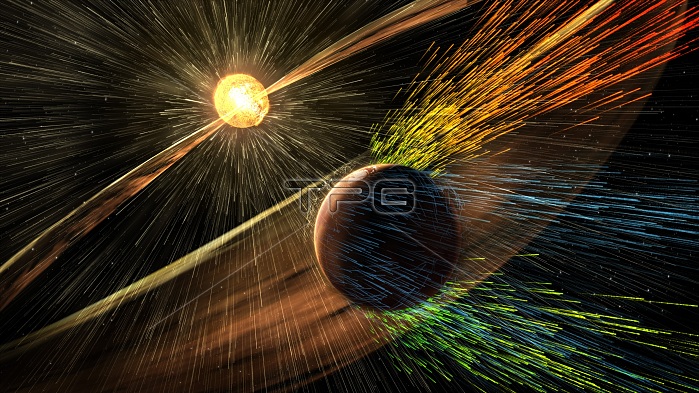
NASA's Mars Atmosphere and Volatile Evolution (MAVEN) mission has identified the process that appears to have played a key role in the transition of the Martian climate from an early, warm and wet environment that might have supported surface life to the cold, arid planet Mars is today. MAVEN data have enabled researchers to determine the rate at which the Martian atmosphere currently is losing gas to space via stripping by the solar wind. The findings reveal that the erosion of Mars' atmosphere increases significantly during solar storms. Solar wind strips away gas at a rate of about 100 grams (equivalent to roughly 1/4 pound) every second. In addition, a series of dramatic solar storms hit Mars' atmosphere in March 2015, and MAVEN found that the loss was accelerated. The combination of greater loss rates and increased solar storms in the past suggests that loss of atmosphere to space was likely a major process in changing the Martian climate. Solar wind is a stream of particles, mainly protons and electrons, flowing from the sun's atmosphere at a speed of about one million miles per hour. The magnetic field carried by solar wind as it flows past Mars can generate an electric field, much as a turbine on Earth can be used to generate electricity. This electric field accelerates electrically charged gas atoms, called ions, in Mars' upper atmosphere and shoots them into space.
| px | px | dpi | = | cm | x | cm | = | MB |
Details
Creative#:
TOP22316496
Source:
達志影像
Authorization Type:
RM
Release Information:
須由TPG 完整授權
Model Release:
N/A
Property Release:
No
Right to Privacy:
No
Same folder images:

 Loading
Loading